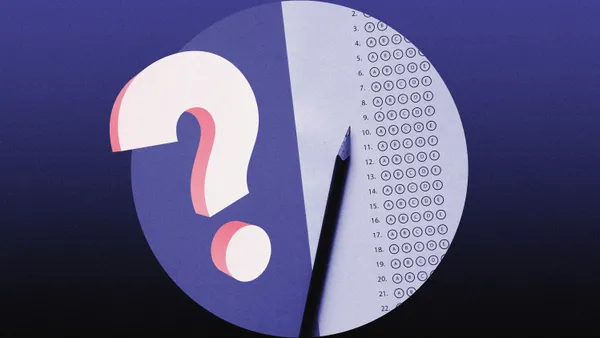Ashley Kannan teaches 8th grade American History and African American Studies at Percy Julian Middle School in Oak Park, Ill. He is a 2025-26 Teach Plus Leading Edge Fellow.
One of America’s largest teachers’ unions recently announced it's starting an artificial intelligence training hub for educators with funding from Microsoft, OpenAI and Anthropic. This news signals that AI in schools is real — something Aadhira already knows.
Aadhira is a rising 8th grader I will teach this fall. Toward the end of last year, I saw her sitting in the hallway, on her laptop. I asked her what she was doing.
“History homework. I’m using AI.”
I asked if her teachers knew she used AI.
“Mr. Kannan, teachers don’t know anything about this AI stuff.”

Aadhira is not wrong. As with most new technologies, most students know more about AI than most adults. But we’re early enough in the process that we have an opportunity: Teachers like me can design the AI experience alongside students like Aadhira and inform the development of projects like the AI training hub. Together, we can create a new and better school experience for our students.
In my 29-year career, I have seen education react late to technology over and over again. We were slow to the internet, smartphones, social media and remote learning. AI is already a part of Aadhira’s life, yet my school district is part of the 80% that lack AI guidance and policies.
Amidst this uncertainty, AI is a pathway for teacher leadership. By embracing AI in my teaching and determining its specific purpose, I can control how it achieves my purpose: advancing my students’ journeys toward scholarship.
I know my classroom and content, and I can speak to how AI tools fit in my teaching. My voice is needed, because I teach students like Aadhira who use AI every day. Since I see what is and is not working, I can successfully influence AI decision-making.
While Aadhira is right that teachers like me “don’t know much about this AI stuff,” I can respond by not only crafting how AI will help me make her a scholar, but also use that expertise to guide how it should look for all of our district’s students. I can be an AI influencer in my classroom and beyond.
AI literacy can be a journey of growth for my students and me. Aadhira will be my AI teacher. I plan on learning her hacks and shortcuts, peeking behind the curtain in drawing from her AI savvy, grasping what she uses AI for, and figuring out how AI can help her be a scholar.
Aadhira can learn from me, too.
For instance, I can teach her how AI tools work with large datasets, how they recognize patterns, and how she can construct better AI prompts. As Aadhira learns the art of developing precise prompts to feed into AI, her language and processing skills will grow. Instead of “Do my homework on the American Revolution,” she can more specifically put in, “I need help on understanding the main causes of the American Revolution.”
As Aadhira shows more precision in her commands, she will learn to better control the AI tool she’s using — something she will need in an AI world. Using AI in this way helps her understand concepts, challenges her thinking, and supports her in creating authentic work.
I can teach Aadhira how to effectively consume AI content. For example, what if she generated artifacts from AI about the causes of the American Revolution and then graded them with a rubric she and I co-created? Aadhira would be examining AI products as opposed to digesting them as unquestioned fact, thinking critically as a scholar as she assesses AI work.
I can also learn through conversations with Aadhira about her AI user experience. These can guide my leadership work, adding teacher and student voice to initiatives such as the AI instructional hub. Aadhira teaches me while I teach her, reflecting our shared AI learning journeys.
Aadhira and I can be pioneers in the birth of a collaborative school setting driven by student and teacher voice. If AI can enhance teacher leadership and develop transformative and worthwhile learning for students, it will permanently transform school into a space where teachers and learners have more voice, agency and, ultimately, power.
Aadhira is coming my way in the fall. As I shape how I want AI to help her be a scholar, I will be ready.









